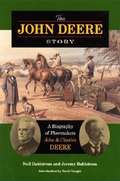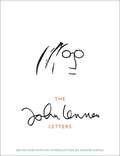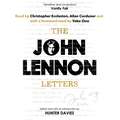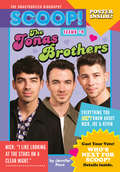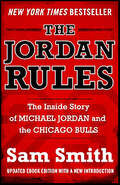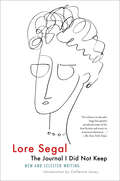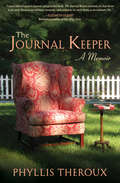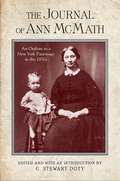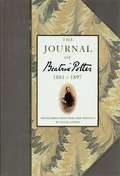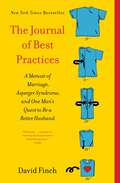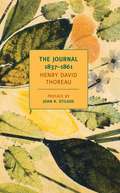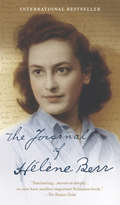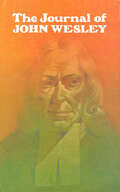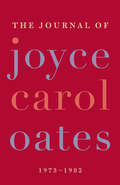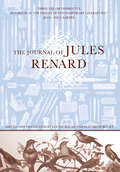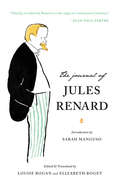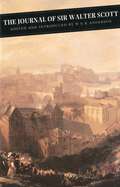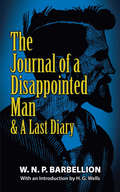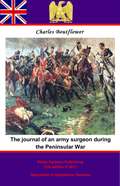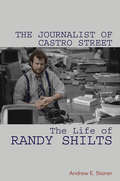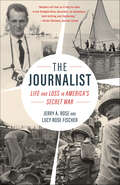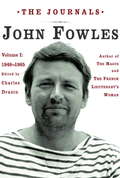- Table View
- List View
The John Deere Story: A Biography Of Plowmakers John And Charles Deere
by Jeremy DahlstromToday, John Deere is remembered-some say mistakenly-as the inventor of the steel plow. Who was this legendary man and how did he create the internationally renowned company that still bears his name? He began as a debt-stricken blacksmith who, fleeing debt in New England in the 1830s, set up shop in a little town on the Illinois frontier. There, in response to farmers' struggles, he designed a new plow that cut through the impervious prairie sod and lay open the rich, heavy soil for planting. The demand for his polished steel plow convinced him to specialize in farm implements. <p><p> In the decades before the Civil War, John Deere envisioned a company supplying midwestern farmers with reliable, affordable equipment. He used only high quality, imported steel and resisted pressure to raise prices. At the same time, he won respectful affection from his employees by working alongside them on the shop floor. Upon taking the helm in the 1860s, John's only surviving son, Charles, expanded the Moline factories to increase production, started branch houses in major midwestern cities to speed distribution, and began to transform the company into a modern corporation. The transformation didn't come without difficulties however: Charles found himself battling the Grange, facing threats of labor unions and strikes led by his own employees, and enduring patent suits and blatant thefts of product designs and advertising.
The John Lennon Letters
by Hunter Davies John LennonA lifetime of letters, collected for the first time, from the legendary musician and songwriter. John Lennon was one of the greatest songwriters the world has ever known, creator of "Help!", "Come Together", "Lucy in the Sky with Diamonds", "Strawberry Fields Forever", "Imagine", and dozens more. But it was in his correspondences that he let his personality and poetry flow unguarded. Now, gathered for the first time in book form, are his letters to family, friends, strangers, and lovers from every point in his life. Funny, informative, wise, poetic, and sometimes heartbreaking, his letters illuminate a never-before-seen intimate side of the private genius.This groundbreaking collection of almost 300 letters and postcards has been edited and annotated by Hunter Davies, whose authorized biography The Beatles (1968) was published to great acclaim. With unparalleled knowledge of Lennon and his contemporaries, Davies reads between the lines of the artist's words, contextualizing them in Lennon's life and using them to reveal the man himself.
The John Lennon Letters: Edited and with an Introduction by Hunter Davies
by Hunter Davies John LennonJohn Lennon was a writer as well as a musician. It was entirely natural for him to put pen to paper whenever he had an idea, a thought, a reaction or a desire to communicate. He lived - and died - in an age before emails and texts. Pen and ink was what he turned to. John wrote letters and postcards all of his life; to his friends, family, strangers, newspapers, organisations, lawyers and the laundry - most of which were funny, informative, campaigning, wise, mad, poetic, anguished and sometimes heartbreaking. For the first time, John's widow, Yoko Ono, has given permission to publish a collection of his letters. The Editor is the Beatles' official biographer, Hunter Davies, who knew John well. John's letters are in a way something of a mystery - where are they all? Over the years many have come up at auction, then sold to dealers and collectors. Or they have been kept by the recipients, locked up safely. It has been a wonderful piece of detective work tracing many of these 250 letters, postcards and notes, which are arranged in chronological order, so that a narrative builds up, reflecting John's life. It will be visual - in a sense that many of the letters are reproduced as they were, in his handwriting or typing, plus the odd cartoon or doodle. THE JOHN LENNON LETTERS is fundamentally a book to read and study, providing a unique insight into the mind of one of the great figures of our times.John's letters are read by Christopher Eccleston. Christopher Eccleston is an English actor who has had a hugely successful career in film, TV and on stage. His regular appearance on the TV series, Cracker, in 1993 brought him recognition and he went on to star along side such actresses as Nicole Kidman and Cate Blanchett. He won the 2011 International Emmy Award for his performance in Jimmy McGovern's Accused. He played John Lennon in the 2010 TV movie in and has twice been nominated in the Best Actor category of the BAFTA TV Awards.Hunter's editorial materials are read by Allan Corduner. Allan Corduner trained at the Bristol Old Vic Theatre School and has appeared on stage in PASSION at the Donmar Warehouse, SERIOUS MONEY in the West End and TITANIC on Broadway, and on screen in YENTL and TOPSY-TURVY, amonst many other roles. He is a highly experience voice actor and memorably narrated the voice of Death when reading THE BOOK THIEF. He has read Elspeth Coopers' WILD HUNT novels for Orion.Includes a foreword read by Yoko Ono(p) 2012 Orion Publishing Group
The Joker
by Andrew HudginsFrom an award-winning poet and compulsive joke teller, a memoir about the jokes that educated him about history, religion, and family--delighting him, and often horrifying him, as he grew into adulthood.Since he was a child, Andrew Hudgins was an unabashed joke teller. When he decided to write about jokes, he discovered that he was actually writing about himself: what jokes had taught and mistaught him, how they often charmed him, and yet how they occasionally made him nervous with their frequent delight in chaos and anger. Born into an Air Force family, Hudgins spent his early childhood moving from base to base. He made friends by telling jokes to his classmates and observing how they responded. But jokes provided Hudgins with more than a source of amusement or a means to relate to friends. Jokes revealed a new world to him: the serious taboo subjects that his family didn't openly discuss--religion, race, sex, and death. In The Joker, Hudgins tells and analyzes the jokes that explore the contradictions in the Baptist religion he was raised in, the jokes that told him what his parents did not tell him about sex, and the racist jokes that divided his family. Hudgins also recounts the jokes he used to court his wife, writer Erin McGrath, and those they continue to tell as they renew their love for each other. Called "a treasure, a golden whoopee cushion, pearled set of chattery teeth" (Benjamin Percy, author of Red Moon, The Wilding, and Refresh, Refresh) and "an absolutely brilliant book, as necessary as it is pleasurable" (Richard Bausch, author of Something Is Out There), The Joker is creative nonfiction at its best, written by a man who knows how to tell a joke, make you laugh, and then dissect what makes it so funny--without killing the humor.
The Jonas Brothers: Issue #4 (Scoop! The Unauthorized Biography #4)
by Jennifer PouxIntroducing a new series of unauthorized biographies on the world's biggest names and rising stars in entertainment, sports, and pop culture! Complete with quizzes, listicles, trivia, and a full-color pull-out poster of the star, this is the definitive collection to get the full Scoop! and more on your favorite celebrities.Nick, Joe, and Kevin. Can you name a more iconic trio? From their early singing days with their mop-top haircuts, to their meteoric rise to superstar status, and then an abrupt breakup in 2013, the Jonas bros are back...and this time they're clean-cut and wifed up. But what's next for the Jonas bros and J sisters? Get the full Scoop! and more on pop's most iconic trio.
The Jordan Rules: The Inside Story of Michael Jordan and the Chicago Bulls
by Sam SmithThe New York Times Bestseller, updated With a New IntroductionThis is the 20th anniversary of the explosive bestseller that changed the way the world viewed one of the greatest athletes in history, revealing for the first time Michael Jordan's relentless drive to win anything and everything, at any cost. NBA Hall of Fame columnist Sam Smith had unlimited access to the team and its players during their championship 1991-92 season, which he details in the new introduction, along with candid revelations about his sources, and the reaction from Michael, his teammates, the media, and the fans when the book blasted onto the bestseller lists in 1992 (where it stayed for three months). With more than a million copies in print, The Jordan Rules remains the ultimate inside look at one of the most legendary teams in sports history.
The Joseph Principles: Turning Adversity and Heartache into Miraculous Living
by Steven K. ScottHas life gone the way you thought it would go? Have your senses of safety, security, and confidence been replaced with fear, doubt, anxiety, and even depression and despair? By following the biblical example of Joseph and the teachings of Jesus, learn to turn your hurt and trials into a springboard for a more tangible and intimate relationship with God. In 2016, a year after releasing his book Jesus Speaks, bestselling author Steven K. Scott&’s mentor and dearest friend, Gary Smalley, fell asleep in his bed and woke up in heaven. Steven had lost not only his best friend of forty-three years but also his most enthusiastic encourager. Brokenhearted, he lost his passion to write. In 2020, Steven was hospitalized, wondering if he&’d survive COVID, and the Holy Spirit let him know, in no uncertain terms, that it was time to break free from past hurts and disappointments, start living in the present, and do what God had called him to do. Inspired, Steven began studying the life of Joseph, a biblical figure who suffered trauma after trauma but used his suffering as a tool. With so many people living in a world of hurt and uncertainty, The Joseph Principles gives you what you need to heal your hurts and successfully navigate through current trials and future adversities. By following examples from Joseph&’s life and the corresponding teachings of Jesus, begin confronting your deepest hurts and find freedom, using your past trauma as a springboard to a closer relationship with God.Through The Joseph Principles, you will:Discover a clear pathway to the joyful and abundant life that Jesus makes available to his followersFind amazing hidden treasures that can truly change the course of your lifeExperience God in the &“miracle of the moment&” by not dwelling on the past or jumping to the futureBe empowered to forgive even when you don&’t want to--even the worst of your offendersDiscover God&’s love language to become more intimately connected with the Father, the Son, and the Holy SpiritBring miracles of God&’s love, mercy, compassion, wisdom, and righteousness into every aspect of life In The Joseph Principles, you&’ll discover specific steps to provide a clear pathway to the joyful and abundant life that Jesus provides for believers.
The Journal I Did Not Keep: New and Selected Writing
by Lore Segal"Segal is a monumental writer, one of the finest of her generation; this lovely collection is a fine introduction to her work."—Kirkus Reviews A DEFINITIVE COLLECTION FROM ONE OF AMERICA'S FINEST WRITERS—INCLUDING NEW AND NEVER-BEFORE-COLLECTED WORK From the award-winning New Yorker writer comes this essential volume spanning almost six decades. Admired for “a voice unlike any other” (Cynthia Ozick) and a style both “wry and poignant” (The New Yorker), Lore Segal is a master literary stylist. This volume collects some of her finest work—including new and uncollected writing—and selections from her novels, stories, and essays. From her very first story—which appeared in The New Yorker in 1961—to today, Segal’s voice has been unique in contemporary American literature: Hilarious and urbane, heartbreaking and profound, keen and utterly unsentimental. Segal has often used her own biography as both subject and inspiration: At age ten she was sent on the Kindertransport from Vienna to England to escape the Nazi invasion of Austria; grew up among English foster families; and eventually made her way to the United States. This experience was the impetus for her first novel, Other People’s Houses, and one that she has revisited throughout her career. From that beginning, Segal’s writing has ranged widely across form as well as subject matter. Her flawless prose and light touch belie the rigor and intelligence she brings to her art—qualities that were not missed by the New York Times reviewer who pointedly observed, “though it was not written by a man . . . Segal may have come closer than anyone to writing The Great American Novel.” With this volume comes a long-awaited career retrospective of an important American Writer.
The Journal Keeper: A Memoir
by Phyllis TherouxThe Journal Keeper is the openhearted and unflinchingly honest memoir of six years in writer Phyllis Theroux's life. As she ages into her sixties, Theroux uses regular journal entries to reflect on the void left by the passing of her remarkable mother and the thrill of allowing a new source of joy into her life. A natural storyteller, Theroux slips her arm companionably into yours, like an old friend going for a stroll. But Theroux's stride is long and her eye sharp, and she swings easily between subjects that occupy us all: love, loneliness, growing old, financial worries, spiritual growth, and caring for an aging parent.A compelling tale in journal form, The Journal Keeper is a rich feast from the writing life — with an unexpected twist. After the death of her mother leaves Theroux feeling adrift, she finds the love that she believed was closed to a woman of her age.Not until Theroux sat down to edit her journals for publication did she realize, in her words, "that a hand much larger and more knowing than my own was guiding my life and pen across the page." She makes a good case for this being true for us all.
The Journal of Ann McMath: An Orphan in a New York Parsonage in the 1850s (Excelsior Editions)
by Ann McMathIn 1851, fourteen-year-old orphan Ann McMath was sent to live with her uncle and his family in their parsonage in Horseheads, New York. Lonely and full of self doubt, anxious to establish female friendships in a new place, and questing for intellectual and moral perfection, she began keeping journal when she was seventeen and wrote in it regularly for the next five years, until she was married. A fascinating example of "biography from below," McMath's journal offers a rare glimpse of of life in the 1850s as it was lived by ordinary women, told in the authentic voice of a young woman coming of age in the Burned-Over District of Western New York. In addition to the journal itself, the book includes an introduction by editor C. Stewart Doty, as well as a geneaology, notes on the text, and a section entitled "People in the Life of Ann McMath," which gives brief biographies of everyone mentioned in the journal.
The Journal of Beatrix Potter from 1881 to 1897
by Beatrix PotterThis ebook has been optimised for viewing on colour devices. Between the ages of 15 and 30 Beatrix Potter kept a secret diary written in code. When the code was cracked by Leslie Linder more than 20 years after her death, the diary revealed a remarkable picture of upper middle-class life in late Victorian Britain. This book provides an illuminating insight into the personality and inspiration of one of the world's best loved children's authors.
The Journal of Best Practices: A Memoir of Marriage, Asperger Syndrome, and One Man's Quest to Be a Better Husband
by David Finch*A New York Times Bestseller* A warm and hilarious memoir by a man diagnosed with Asperger syndrome who sets out to save his relationship.Five years after David Finch married Kristen, the love of his life, they learned that he has Asperger syndrome. The diagnosis explained David&’s ever-growing list of quirks and compulsions, but it didn&’t make him any easier to live with. Determined to change, David set out to understand Asperger syndrome and learn to be a better husband with an endearing zeal. His methods for improving his marriage involve excessive note-taking, performance reviews, and most of all, the Journal of Best Practices: a collection of hundreds of maxims and hard-won epiphanies, including &“Don&’t change the radio station when she&’s singing along&” and &“Apologies do not count when you shout them.&” David transforms himself from the world&’s most trying husband to the husband who tries the hardest. He becomes the husband he&’d always meant to be. Filled with humor and wisdom, The Journal of Best Practices is a candid story of ruthless self-improvement, a unique window into living with an autism spectrum condition, and proof that a true heart is the key to happy marriage.
The Journal of Henry David Thoreau: 1837-1861
by Henry David Thoreau Damion Searls John StilgoeHenry David Thoreau's Journal was his life's work: the daily practice of writing that accompanied his daily walks, the workshop where he developed his books and essays, and a project in its own right--one of the most intensive explorations ever made of the everyday environment, the revolving seasons, and the changing self. It is a treasure trove of some of the finest prose in English and, for those acquainted with it, its prismatic pages exercise a hypnotic fascination. Yet at roughly seven thousand pages, or two million words, it remains Thoreau's least-known work. This reader's edition, the largest one-volume edition of Thoreau's Journal ever published, is the first to capture the scope, rhythms, and variety of the work as a whole. Ranging freely over the world at large, the Journal is no less devoted to the life within. As Thoreau says, "It is in vain to write on the seasons unless you have the seasons in you."
The Journal of Hélène Berr
by Hélène BerrNot since The Diary of Anne Frank has there been such a book as this: The joyful but ultimately heartbreaking journal of a young Jewish woman in occupied Paris, now being published for the first time, 63 years after her death in a Nazi concentration camp.On April 7, 1942, Hélène Berr, a 21-year-old Jewish student of English literature at the Sorbonne, took up her pen and started to keep a journal, writing with verve and style about her everyday life in Paris -- about her studies, her friends, her growing affection for the "boy with the grey eyes," about the sun in the dewdrops, and about the effect of the growing restrictions imposed by France's Nazi occupiers. Berr brought a keen literary sensibility to her writing, a talent that renders the story it relates all the more rich, all the more heartbreaking.The first day Berr has to wear the yellow star on her coat, she writes, "I held my head high and looked people so straight in the eye they turned away. But it's hard." More, many more, humiliations were to follow, which she records, now with a view to posterity. She wants the journal to go to her fiancé, who has enrolled with the Free French Forces, as she knows she may not live much longer. She was right. The final entry is dated February 15, 1944, and ends with the chilling words: "Horror! Horror! Horror!" Berr and her family were arrested three weeks later. She went -- as was discovered later -- on the death march from Auschwitz to Bergen-Belsen, where she died of typhus in April 1945, within a month of Anne Frank and just days before the liberation of the camp.The journal did eventually reach her fiancé, and for over fifty years it was kept private. In 2002, it was donated to the Memorial of the Shoah in Paris. Before it was first published in France in January 2008, translation rights had already been sold for twelve languages.
The Journal of John Wesley
by Percy Livingstone Parker"Christians will find their hearts warmed as they read this diary of one whose heart was intensely warmed by the love of God." --Bibliotheca SacraThe influence of John Wesley on the history of the modern Christian Church is inestimable. Not only did his extensive evangelistic work in England and the United States have a very powerful effect, but his devotional meditations have become loved and cherished by Christians everywhere. John Wesley's complete journal, which he added to daily, encompasses twenty-six volumes describing his experiences and deep inner spiritual life and growth. During his lifetime, portions of this journal were published in four volumes. Here in this handy paperback are selections from this work, giving easy access to the ardent meditations and unique experiences of this man of God. A new understanding of John Wesley and his ministry will be gained from reading this journal, but more important, it offers a new understanding of the God he served.
The Journal of John Wesley
by Percy Livingstone Parker"Christians will find their hearts warmed as they read this diary of one whose heart was intensely warmed by the love of God." --Bibliotheca SacraThe influence of John Wesley on the history of the modern Christian Church is inestimable. Not only did his extensive evangelistic work in England and the United States have a very powerful effect, but his devotional meditations have become loved and cherished by Christians everywhere. John Wesley's complete journal, which he added to daily, encompasses twenty-six volumes describing his experiences and deep inner spiritual life and growth. During his lifetime, portions of this journal were published in four volumes. Here in this handy paperback are selections from this work, giving easy access to the ardent meditations and unique experiences of this man of God. A new understanding of John Wesley and his ministry will be gained from reading this journal, but more important, it offers a new understanding of the God he served.
The Journal of Joyce Carol Oates, 1973-1982
by Joyce Carol OatesThe Journal of Joyce Carol Oates, edited by Greg Johnson, offers a rare glimpse into the private thoughts of this extraordinary writer, focusing on excerpts written during one of the most productive decades of Oates's long career. Far more than just a daily account of a writer's writing life, these intimate, unrevised pages candidly explore her friendship with other writers, including John Updike, Donald Barthelme, Susan Sontag, Gail Godwin, and Philip Roth. It presents a fascinating portrait of the artist as a young woman, fully engaged with her world and her culture, on her way to becoming one of the most respected, honored, discussed, and controversial figures in American letters.
The Journal of Jules Renard
by Jules Renard Louise Bogan Elizabeth Roget<P> Spanning from 1887 to a month before his death in 1910, The Journal of Jules Renard is a unique autobiographical masterpiece that, though celebrated abroad, is largely undiscovered in the United States. <P> Spanning from 1887 to a month before his death in 1910, The Journal of Jules Renard is a unique autobiographical masterpiece that, though celebrated abroad and cited as a principle influence by writers as varying as Somerset Maugham and Donald Barthelme, remains largely undiscovered in the United States. Throughout his journal, <P> Renard develops not only his artistic convictions but also his humanity as he reflects on the nineteenth-century French literary and art scene, and on the emergence of his position as an important novelist and playwright in that world. Renard provides aphorisms and quips, and portrays the details of his personal life--his love interests, his position as a socialist mayor of Chitry, the suicide of his father--that often appear in his work.
The Journal of Jules Renard
by Jules Renard Sarah MangusoSpanning 1887 to a month before his death in 1910, The Journal of Jules Renard is a unique autobiographical masterpiece that, though celebrated abroad and cited as a principle influence by writers as varying as Somerset Maugham and Donald Barthelme, remains more of a cult object in the United States. <P><P> Throughout his journal, Renard develops not only his artistic convictions but also his humanity as he reflects on the nineteenth-century French literary and art scene, and on the emergence of his position as an important novelist and playwright in that world. Through a mix of aphorisms and observations, short scenes, gossip, jokes, and meditations on life and art, Renard portrays the details of his personal life, his love interests, his position as a socialist mayor of Chitry, the suicide of his father, that often appear in his work. <P><P> In recent years, the fragmented memoir has grown in popularity, and there’s been a resurgence of diary as an artistic form. Once again, Jean Paul Sartre’s assessment that “directly, or indirectly, Renard is at the origin of contemporary literature” rings true. In a new introduction, Sarah Manguso—whose groundbreaking nonfiction incorporates elements of diary and aphorism—both contextualizes and celebrates Renard’s seminal journal.
The Journal of Sir Walter Scott (Canongate Classics #87)
by Sir Walter ScottThis edition of the great Scottish author&’s personal journal is &“truly a classic . . . compelling right to the very last unfinished sentence&” (Scotland on Sunday, UK). The celebrated 18th and 19th century Scottish author of such classics as Ivanhoe, Rob Roy, and The Lady of the Lake delivers what many regard as his greatest work: a day-to-day account of the last six years of his life as he navigates financial ruin, bereavement, and increasing ill health. Laboring to pay off debts of more than £120,000, Scott emerges, not simply as a great writer, but as an almost heroic figure whose generosity and even temper shine through at all times. This edition of Scott&’s journals presents a complete edited text and notes drawing on a wealth of other material including correspondence, reminiscences and the memoirs of Scott&’s contemporaries. It remains one of the standards by which Scott scholarship is judged.&“Scott&’s Journal is a hugely important piece of Scottish, and indeed European literature, published here with an incisive introduction, brilliantly judicious annotation and appendices and an excellent index . . . Walter Scott has never been so readable.&” —The Herald, UK
The Journal of a Disappointed Man: & A Last Diary
by W.N.P. BarbellionPublished shortly before the author's death in 1919, The Journal of a Disappointed Man presents a remarkable memoir that addresses struggles with poverty, inadequate education, and the creeping paralysis of multiple sclerosis. Yet author W. N. P. Barbellion manages to write with uplifting eloquence and passion of his love for family, natural history, music, and literature. Told with a thoroughly modern voice, the unjustly overlooked Journal is reprinted here with its posthumous successor, A Last Diary. This edition features a thoughtful Introduction by H. G. Wells, who writes of the book's "exquisite beauty." W. N. P. Barbellion (1889–1919), whose real name was Bruce Frederick Cummings, was a naturalist who worked in the Entomology Department of London's Natural History Museum. Upon attempting to enlist in the British Army during World War I, he was diagnosed with multiple sclerosis. The discovery of his disease intensified the tenor of his journal-keeping, and his frank and articulate reflections on coping with a fatal illness remain a powerful testament to his life and struggles.
The Journal of an Army Surgeon during the Peninsular War (The\spellmount Library Of Military History)
by Charles BoutflowerThis ebook is purpose built and is proof-read and re-type set from the original to provide an outstanding experience of reflowing text for an ebook reader. A rarity amongst Peninsular accounts, are those that come from the medical services of the British army, Boutflower's journal was printed sixty years after his death but remains even now fresh and interesting. His duty was to patch, tend and mend the fighting men of the 40th Regiment of Foot, during the fierce fighting against the French. His journal principally focuses on the campaigns under the Duke of Wellington that stretched from 1809 to 1814, although his service had drawn him to South America and the West Indies beforehand. He was promoted to the staff of Sir Rowland "Daddy" Hill as surgeon in 1812, but not before he had seen and described the butchery of the battle of Albuera. Also present at the battle of Salamanca his narrative, in spite of some erratic spelling, contemporaneous, vital and gripping. A valuable and memorable work. Author - Charles Boutflower - (1782 - 1844) Text taken, whole and complete, from the edition published in 1911, Manchester, by Refuge Printing Dept Original - 196 pages.
The Journalist of Castro Street: The Life of Randy Shilts
by Andrew E StonerAs the acclaimed author of And the Band Played On, Randy Shilts became the country's most recognized voice on the HIV/AIDS epidemic. His success emerged from a relentless work ethic and strong belief in the power of journalism to help mainstream society understand not just the rising tide of HIV/AIDS but gay culture and liberation.In-depth and dramatic, Andrew E. Stoner's biography follows the remarkable life of the brash, pioneering journalist. Shilts's reporting on AIDS in San Francisco broke barriers even as other gay writers and activists ridiculed his overtures to the mainstream and labeled him a traitor to the movement, charges the combative Shilts forcefully answered. Behind the scenes, Shilts overcame career-threatening struggles with alcohol and substance abuse to achieve the notoriety he had always sought, while the HIV infection he had purposely kept hidden began to take his life.Filled with new insights and fascinating detail, The Journalist of Castro Street reveals the historic work and passionate humanity of the legendary investigative reporter and author.
The Journalist: Life and Loss in America's Secret War
by Jerry A. Rose Rose FischerJerry Rose, a young journalist and photographer in Vietnam, exposed the secret beginnings of America’s Vietnam War in the early 1960s. Putting his life in danger, he interviewed Vietnamese villagers in a countryside riddled by a war of terror and intimidation and embedded himself with soldiers on the ground, experiences that he distilled into the first major article to be written about American troops fighting in Vietnam. His writing was acclaimed as “war reporting that ranks with the best of Ernest Hemingway and Ernie Pyle,” and in the years to follow, Time, The New York Times, The Reporter, New Republic, and The Saturday Evening Post regularly published his stories and photographs. In spring 1965, Jerry’s friend and former doctor, Phan Huy Quat, became the new Prime Minister of Vietnam, and he invited Jerry to become an advisor to his government. Jerry agreed, hoping to use his deep knowledge of the country to help Vietnam. In September 1965, while on a trip to investigate corruption in the provinces of Vietnam, he died in a plane crash in Vietnam, leaving behind a treasure trove of journals, letters, stories, and a partially completed novel. The Journalist is the result of his sister, Lucy Rose Fischer, taking those writings and crafting a memoir in “collaboration” with her late brother—giving the term “ghostwritten” a whole new meaning.
The Journals
by John FowlesIn 1963 John Fowles won international recognition with his first published novel The Collector. But his roots as a serious writer can be traced back long before to the journal he began as a student at Oxford in the late 1940s and continued to keep faithfully over the next half century. Written with an unsparing honesty and forthrightness, it reveals the inner thoughts and creative development of one of the twentieth century's most innovative and important novelists. This first-hand account of the road to fame and fortune holds the reader's attention with all the narrative power of the novels, but also offers an invaluable insight into the intimate relationship between Fowles's own life and his fiction.
